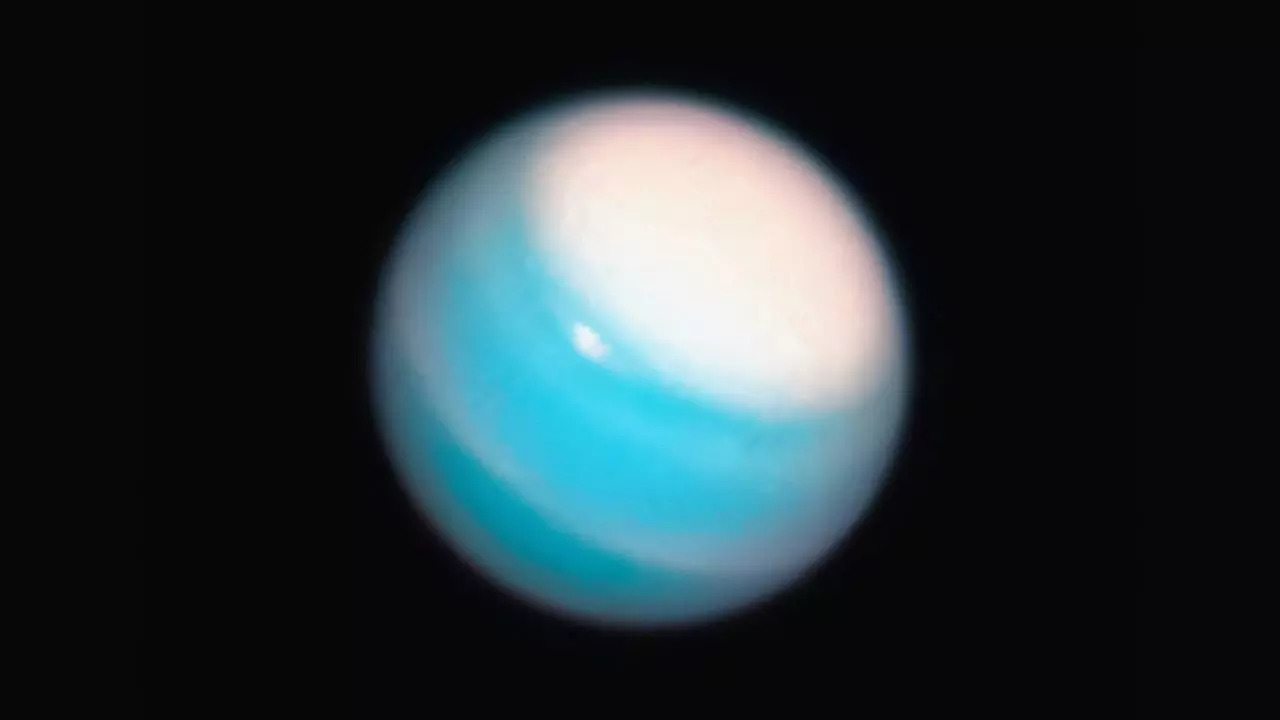This Hubble Space Telescope Wide Field Camera 3 image of Uranus, taken in Nov. 2018, reveals a vast bright stormy cloud cap across the planet’s north pole. Credits: NASA, ESA, and A. Simon (NASA Goddard Space Flight Center), and M. Wong and A. Hsu (University of California, Berkeley)
Scientists have made a significant discovery in their quest to find water across the solar system, using NASA‘s James Webb Space Telescope (JWST). They have detected carbon dioxide ice on the surface of Ariel, one of the 27 moons orbiting Uranus. This finding is part of the “Moons of Uranus” project, which aims to explore the moons of Uranus for signs of water, ammonia, organic molecules, or carbon dioxide ice.
After 21 hours of observation through the JWST, the researchers found that carbon dioxide ice is present on Ariel’s surface. This discovery suggests the possibility of a liquid ocean beneath the moon’s icy crust. The presence of carbon dioxide ice could be the result of chemical processes occurring in this underground ocean, releasing carbon dioxide through cracks in the ice. Another hypothesis suggests that Uranus’ magnetic field might be breaking down molecules to produce the carbon dioxide ice observed on Ariel’s surface.
Additionally, the researchers detected carbon monoxide and traces of carbonates on Ariel. These minerals typically form when water interacts with rocks, further supporting the theory of an underground ocean. The discovery of such oceans is crucial because they could potentially harbor or sustain life, similar to the known underground oceans on three of Jupiter’s largest moons.
Ariel, one of Uranus’ 27 moons, is the third largest planet in the solar system. The moon, named after a character from William Shakespeare’s play “The Tempest,” has a surface characterized by canyons, grooves, and smooth regions. Ariel was first photographed by NASA’s Voyager 2 in 1986, which captured images of a third of its surface. The recent discovery by JWST opens new possibilities for understanding the moon’s geology and the potential for life in these hidden oceans.

Shambhu Kumar is a science communicator, making complex scientific topics accessible to all. His articles explore breakthroughs in various scientific disciplines, from space exploration to cutting-edge research.


